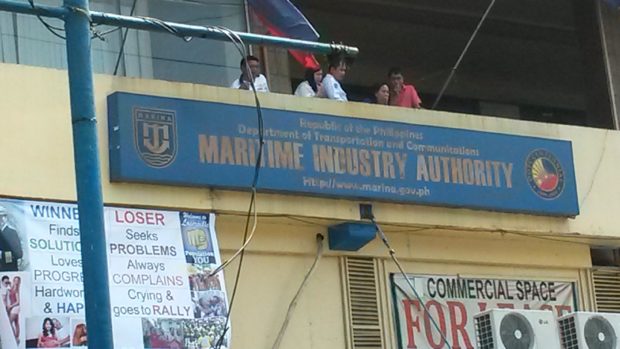Marina seeks new site for shipyards affected by Cebu town reclamation project
CEBU CITY––The Maritime Industry Authority (Marina) is seeking the relocation area for 12 shipyards in Consolacion town, north Cebu that will be displaced if the local government pushes through with its 235.8-hectare reclamation.
“We have to do something to alleviate the plight of our shipyards,” said Marina Administrator Vice Admiral Robert Empedrad in a post on Facebook.
Empedrad said the 12 shipyards in Barangay Tayud in 2019 served more than 300 commercial and government ships, including those from the Philippine Coast Guard and the Philippine Navy.
Shipbuilding and ship repair have been a vibrant industry in Cebu province as thousands of workers are employed in these facilities.
The Consolacion municipal government, however, wants to remove the shipyard occupying the foreshore area and reclaim it in partnership with a private consortium—La Consolacion Seafront Development Corporation (LCSDC).
Article continues after this advertisementThe project, dubbed “Seafront City,” consists of two reclamation types: an island with a size of 160.65 hectares and a foreshore-based type that is 75.24 hectares in size.
Article continues after this advertisementIn an earlier interview, Marina-Central Visayas Director Marc Anthony Pascua said the shipyards in Consolacion town had helped make sure ships were in shape and safe to accommodate passengers.
Residents and fisherfolk in Barangay Tayud recently brought the matter to President Duterte to stop the reclamation project.
They, however, have yet to receive feedback from the Office of the President.
During the Maritime Industry Symposium last September, the Shipyard Association of the Philippines (ShAP) said the Seafront City reclamation project was ill-timed.
ShAP President Meneleo Carlos III criticized the move of Consolacion officials, emphasizing that it would only further jeopardize the employment of many workers amid the COVID-19 pandemic.
In his State of the Town Address on Monday, Consolacion Mayor Joannes Alegado insisted that he would proceed with the reclamation project despite opposition from some sectors.
Alegado, who is running as the second nominee of a party-list group, said he would focus his remaining eight months left in office on the town’s reclamation project.
But environment experts, who aim to support public policy-making with data-driven analyses, warned Consolacion officials against the project.
“Should the reclamation project continue as it is, the damage to our marine biodiversity will be irreversible,” said Dr. Filipina Sotto, project leader of the FBS-Environment and Community Research and Development Services, a Cebu-based think-tank focusing on environmental issues.
“The loss of our natural resources will also harm the poor the most, such as the fisherfolk who rely on the sea for their income and sustenance,” she added.
In their study, Sotto said her team found 75 coral and seven mangrove species in the area.
The destruction of corals, she said, would harm aquatic animals because they would lose habitat and source of food.
“For people who live near the seas, corals and mangroves are important because they form barriers that weaken the impact of sea waves. Without them, these people are more vulnerable to strong floods,” she said.
Sotto said they also found out that fisherfolk from the neighboring towns of Consolacion still go to the proposed reclamation area for their livelihood, contrary to the local government’s claims that no more people fish in the area.
The study showed that 500 fisherfolk from Consolacion and Liloan and the cities of Mandaue and Lapu-Lapu would lose their livelihood if the reclamation project pushes through.
Since a dump-and-fill project needs minerals from the ground, Sotto said project proponents also need to quarry land from the mountains, which, in the long run, increases the risks of landslides during the rainy season.
Other natural resources that could be destroyed by the reclamation project include 51 species of macrobenthic invertebrates and seven species of mangroves that are nursery grounds supporting the fishery in Cansaga Bay, according to the study.
The environment experts said any reclaimed land in the area would likely collapse since these are natural mudflat terrains that do not have stable soil foundations.
“These are also prone to liquefaction, a phenomenon where soil loses strength and stiffness. In other words, the local government and LCDSC will likely lose the money they are investing because Seafront City may crumble one day,” Sotto said.
Instead of pursuing the Seafront City reclamation project, Sotto called on Consolacion officials to plant mangroves.
